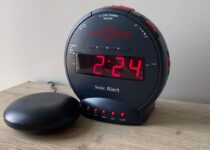How Far Can a 20 by 60 by 60 Spotting Scope See?
When it comes to finding the best spotting scope, there is a lot of confusion regarding magnification. While most spotting scopes come with a range of embellishments (usually between 15 and 60) that are suitable for most uses, there are inevitable setbacks that can arise when using higher powers. These setbacks are related to the optical quality of the spotting scope and the lenses.
How Far Can a 20 by 60 by 60 Spotting Scope See?
The objective lens is the part of the spotting scope that catches the most light. A larger objective lens allows more light to hit the eyepiece roxant blackbird spotting scope, resulting in a more sharp picture. However, more significant objectives are also more expensive.

This can be a disadvantage, especially if you’re uncomfortable with the extra weight. A better option is to purchase a fixed eyepiece. The image will be brighter and more transparent, plus the fixed eyepiece offers a broader field of view. This is particularly useful if you’re a bird watcher since you can see more of the field of view.
The magnification power refers to the number of times the object appears to be larger. The 20-60X range is the most popular, but the upper range is rarely used in low-light conditions. You can get a good picture even at 40X for 100 yards with a good eyepiece. The highest-end models feature fully multicoated lenses, which allow for greater light gathering capacity.
If you’re going to be viewing at a distance of 20 km or more, you’ll want a scope that’s capable of high magnifications. While this doesn’t necessarily mean you need a spotting scope that has the highest possible power, it does make it easier to see what you’re looking at. You’ll also want a solid tripod. A flimsy one isn’t likely to hold up to the weight of a high-power scope.
The first thing to know about eye relief is that it’s usually not important. However, if you’re wearing glasses, you might need a longer eye relief. Generally, you’ll want to look through the eyepiece with a lens between 16 and 17 millimeters wide. This should give you enough light to reach your iris. If you find that you’re unable to reach your iris with the eyepiece, you’ll need a scope with a wider exit pupil.
Another important consideration is the chromatic aberration. Generally, the more magnification the scope has, the more chromatic aberration there will be. If the optics are poor or the lenses aren’t coated properly, you’ll likely experience chromatic aberration. Fortunately, most high-quality scopes have an anti-chromatic coating, which will help reduce chromatic aberration. ED coatings are more effective than fluorite coatings, as they don’t crack as easily.
The spotting scope field of view isn’t always 210 deg in a horizontal arc, so you should avoid trying to zoom in on an object when it’s in a different part of the field. You should also use a reference point to measure how far away an object is. To do this, keep your head still while looking through the eyepiece. You can turn the knob to sharpen focus.


